Home cinema enthusiasts who want to get the best out of three-dimensional sound formats like Dolby Atmos and DTS:X should seriously consider having more channels. The more speakers in the room – even up high – the more immersive and resolved the three-dimensional soundscape that surrounds the listener becomes. But when more channels shouldn’t come at the expense of sound quality, it quickly becomes very expensive.
The all-new Marantz Cinema 30 surround amplifier is the first true successor to the nearly eight-year-old SR8015. It’s about time! We’re at the high end, both in terms of price and quality. You get a full 11.4 amplifier channels and there’s room for two more if you have a spare power amplifier lying around.
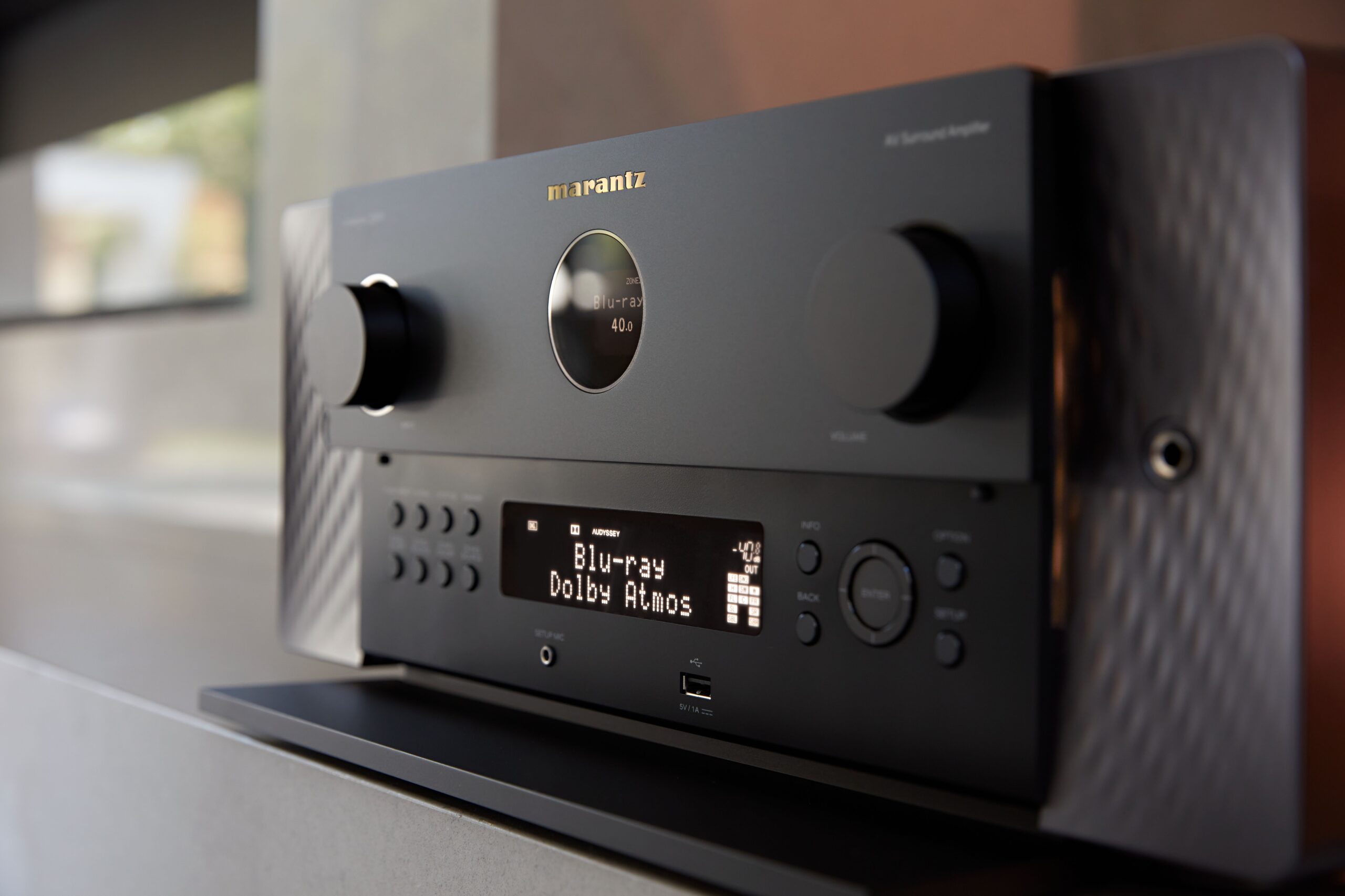
Related to Denon
The Marantz amplifier is identically equipped as the Denon AVC-X6800H, only with an additional HDMI output (3 instead of 2). The two manufacturers are actually siblings, sharing the same platform and components. Both are Class AB amplifiers, where many competitors have switched to Class D. It’s more efficient, but often doesn’t sound as good. Both are rated at 140 watts per channel into 8 ohms, with two driven simultaneously in stereo.
However, there is a slight difference in the preamplifier stage, where Marantz uses more expensive HDAM preamplifier modules to achieve better dynamics and transient response.
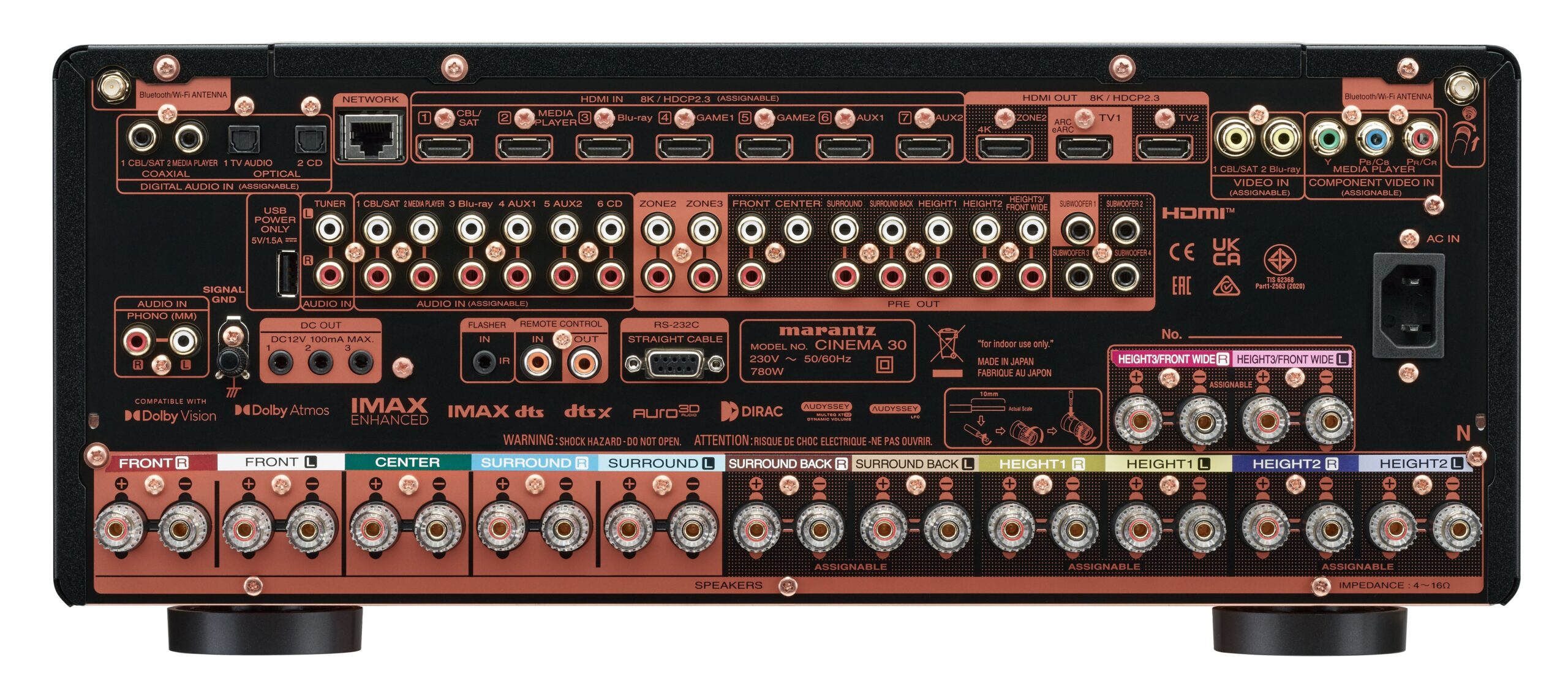
Four subwoofers
A speciality of the Cinema 30 is that it can control up to four individual subwoofers and calibrate the sound individually for each of them. Four subwoofers may seem like a lot, but in addition to increasing sound pressure, it provides a more even bass distribution in the room with fewer dead zones. And with individual processing, the room correction system can do wonders for bass response.
One small question I have is that none of the subwoofer outputs are balanced. Here you often use long cables and with unbalanced RCA, my experience is that the subwoofer can sometimes sound weak, which is often eliminated with balanced XLR.
The test setup
In our test room we have a Procella 7.1 THX speaker system with a pair of Martin Logan SLMs mounted in the ceiling for the Atmos channels. To test with all channels in the Marantz amplifier, I temporarily set up an extra pair of ceiling speakers. A 7.1.4 setup, in other words, to test all 11 channels. However, we only have one subwoofer with two 15-inch drivers.
At home, I have an in-wall home cinema from M&K Sound with five IW-150As in the front, centre and ceiling and a pair of tripole IW-150Ts as surround speakers. Two compact IW28S subwoofers, each with two 8-inch drivers, are built under each of the front speakers. All speakers are in a sealed enclosure.
My 5.2.2 setup doesn’t utilise all channels of the Marantz amplifier, but here good room correction is even more important than in the office test room. Not least because the room is not acoustically treated, but simply set up in a normal way.
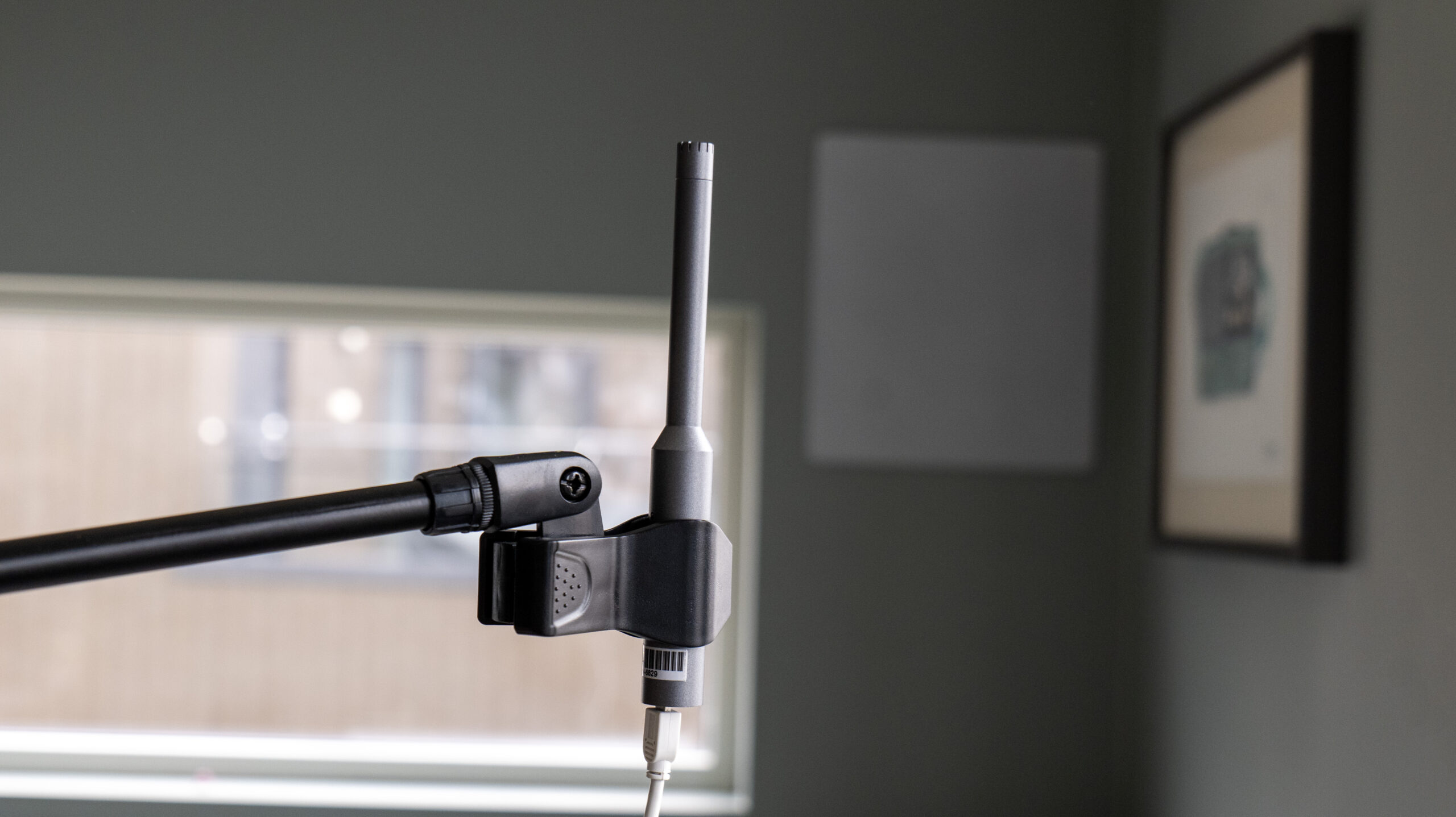
Dirac Live for adventurous and discerning ears
Speaking of room correction, the Cinema 30 uses Audyssey MultEQ XT32, which measures and calibrates for up to eight measurement points around the listening position. It works really well even when the speakers are placed behind a screen.
For the extra adventurous, Dirac Live is offered as an upgrade. A licence costs extra and you’ll also need to buy a separate microphone as the included Audyssey microphone doesn’t work with Dirac. In return, you get one of the most advanced room correction systems on the market, resulting in even more accurate sound.
Most recently, Dirac Live has added Bass Control for multiple individual subwoofers. The system uses machine learning and artificial intelligence to calculate correction for multiple subwoofers simultaneously. Cinema 30 is compatible with this, and yes, it makes a difference.
Dirac Live requires a PC or Mac and a lot of patience. The system uses measurements from as many as 17 microphone locations around the listening position!
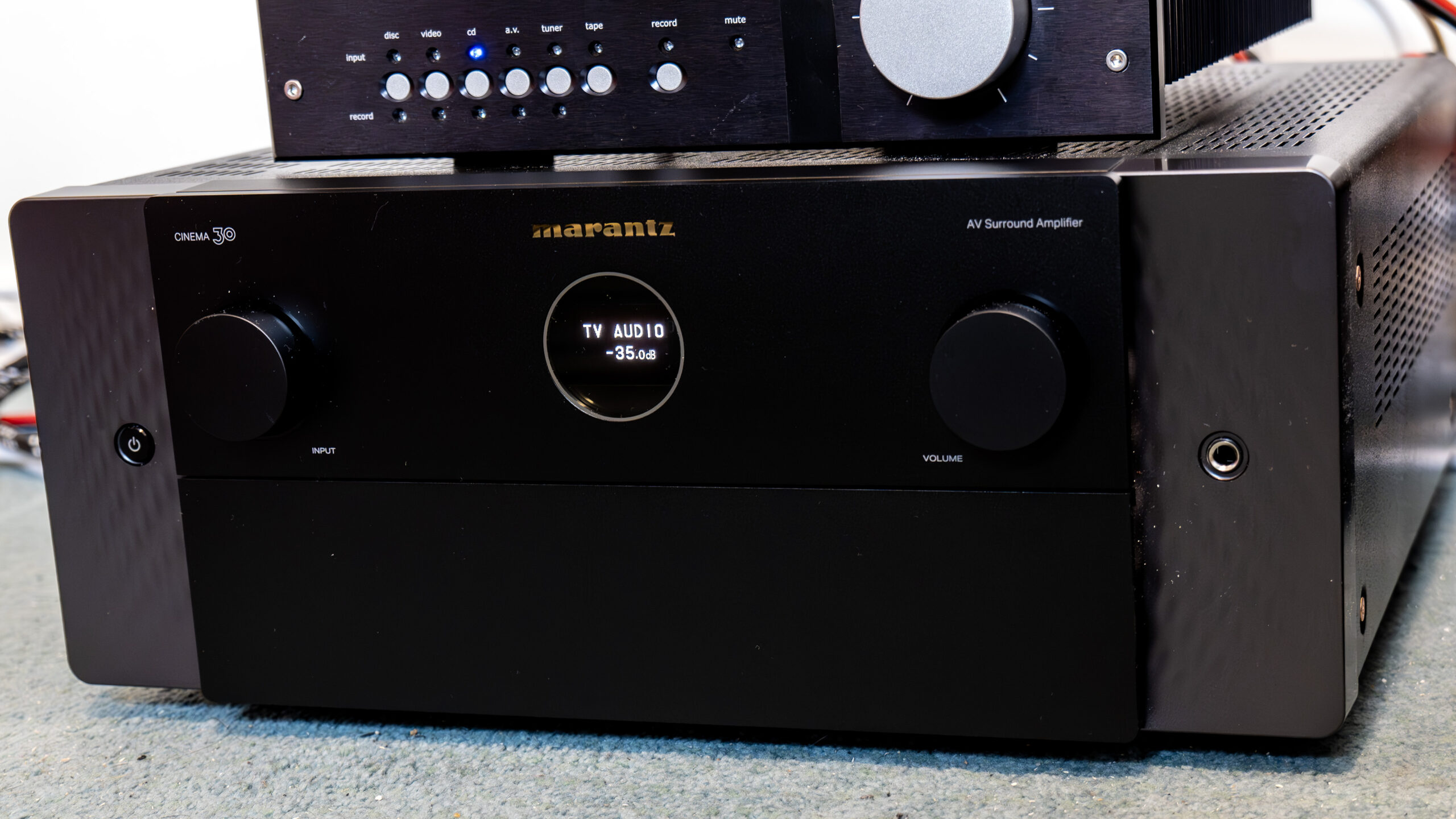
Ease of use
The menu system should be familiar to users of Marantz or Denon over the last five or six years. The initial on-screen setup asks relevant questions about the number of speakers and subwoofers before the system suggests connections and makes the necessary settings. The audio is played alternately through each speaker channel so you can hear if the channels are addressed to the correct speaker.
Then the rest of the room correction work is left to Audyssey MultEQ XT32. Even if you want to use Dirac, you should use Audyssey first, as Dirac will take its bass processing and frequency division and add its own magic on top.
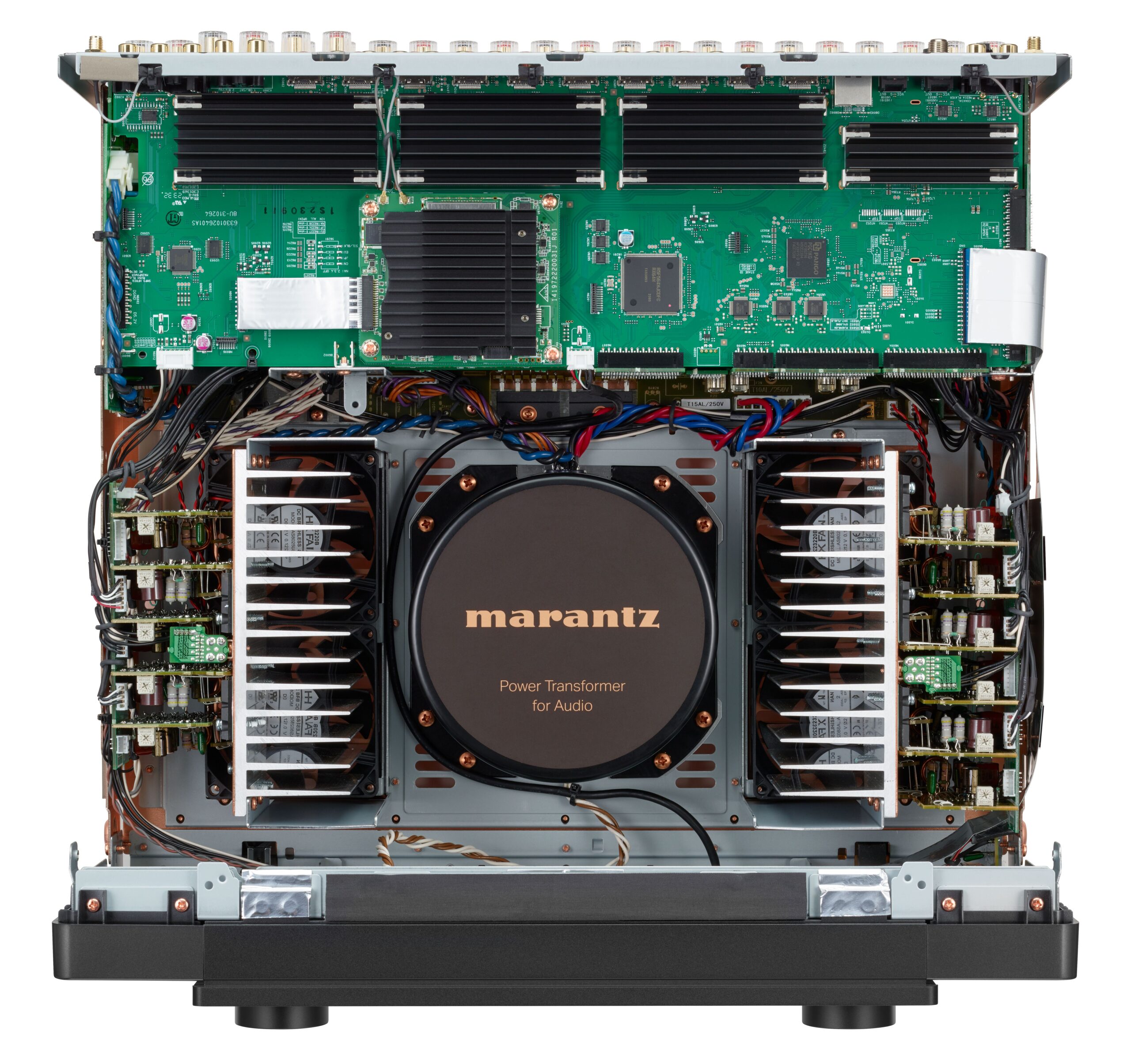
What you need to look out for
Not everything about usability makes sense once the product is set up. Firstly, if the amplifier is in a different room to the speakers, it will be natural to control it with the app. It works well, but is sometimes very slow. A better solution is an IR extender so you can use the original remote control from another room. But I find myself thinking: Why don’t these types of products come with Bluetooth remote control? Televisions have had it for a long time, so it’s about time it came to serious home cinema equipment.
For optimal sound and dynamics, you should also remember to deactivate the Loudness Management function, either via the app or the menu. It’s enabled by default, so remove it. The description says it only applies to Dolby TrueHD encoded audio tracks, but you can clearly hear that compressed Dolby audio from Netflix and other services also suffer from this feature. Essentially, it reduces the dynamics, but also the midrange. So you get fuller bass and more treble, but at the expense of sound pressure, resolution and especially voice reproduction.
If the amplifier is connected to the TV with HDMI eARC and you want to control the sound level with the TV’s remote control, you must activate HDMI Control yourself.
Cinema experience
Once everything is set up, it’s time for an immersive cinema experience. Cinema 30 delivers hugely immersive and detailed surround sound. Powerful guns and exploding shells thunder around the room with convincing dynamics and sound pressure. The ceiling channels create an airy, three-dimensional sense of space, and the detail and nuances are outstanding.
There’s a clear difference between compressed streaming audio from Netflix and lossless quality from Blu-ray. I would definitely consider purchasing the Oppenheimer film on 4K Blu-ray instead of a streaming service. Cinema 30 excels at both, but there’s clearly more dynamics and air from the uncompressed Blu-ray audio track.
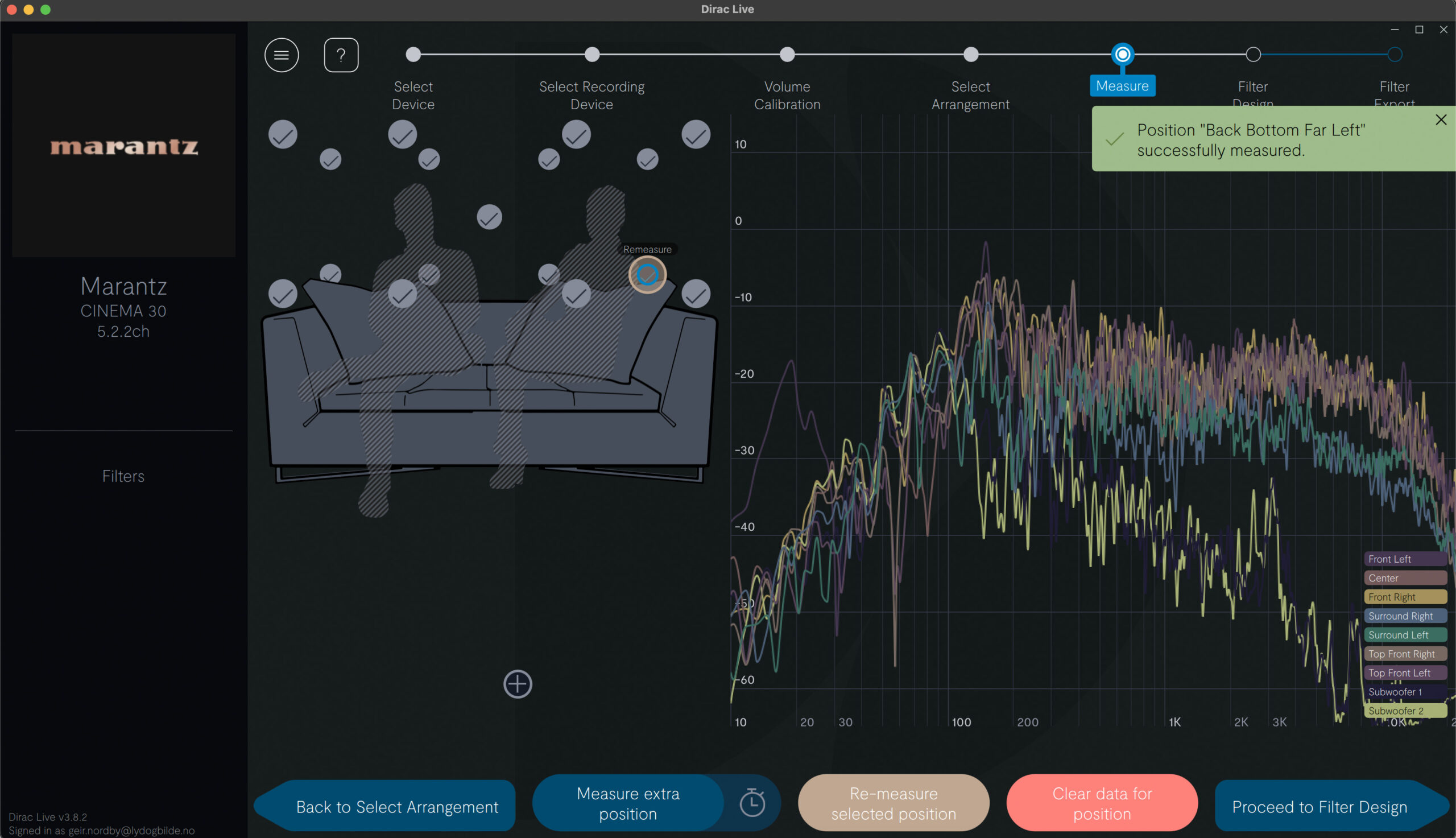
Even better with Dirac
Many will be fine with the room correction from Audyssey. In my house, however, only Dirac really works. The passive subwoofers don’t have a built-in crossover and each need their own customised DSP amplifier. So far, I’ve skipped that in favour of using my own amplifiers.
Audyssey can’t get the subwoofers to sound right, even though I’ve set an upper crossover frequency in the processor. It becomes lifeless, but worse, they quickly sound jarring when things get busy. With Dirac, on the other hand, the bass is spot on! For me, it’s definitely worth the extra Bass Control licence in addition to the regular Dirac Live licence.
The vast majority of users have one or more active subwoofers with built-in DSP and therefore don’t share my problem. In our acoustically controlled test room with the Procella setup, the benefits of Dirac are minor. But they are there, in the form of a better integrated bass, but also a better coherence between channels than the Audyssey MultEQ XT32 manages. The sound is more airy and homogeneous, and the magic of the soundtrack comes out better.
Musical enjoyment
The Cinema 30 also excels with music, and it’s only with two-channel stereo music experiences that I realise the Cinema 30 is slightly better than the Denon AVC-6800H. The airiness and speed surpasses its sister model, making vocals and acoustic instruments seem more lifelike and engaging. The stereo image also grows big and airy.
Classical music in surround sounds exceptionally good. The 2L release Tuvayhun on Blu-ray in Dolby Atmos with the Trondheim Soloists and Nidarosdomens Jentekor and with sound by Grammy winner Morten Lindberg sounds simply amazing. All eleven channels work seamlessly together to provide a precise and resolved sound. Orchestral music in particular takes on a new dimension in the room.
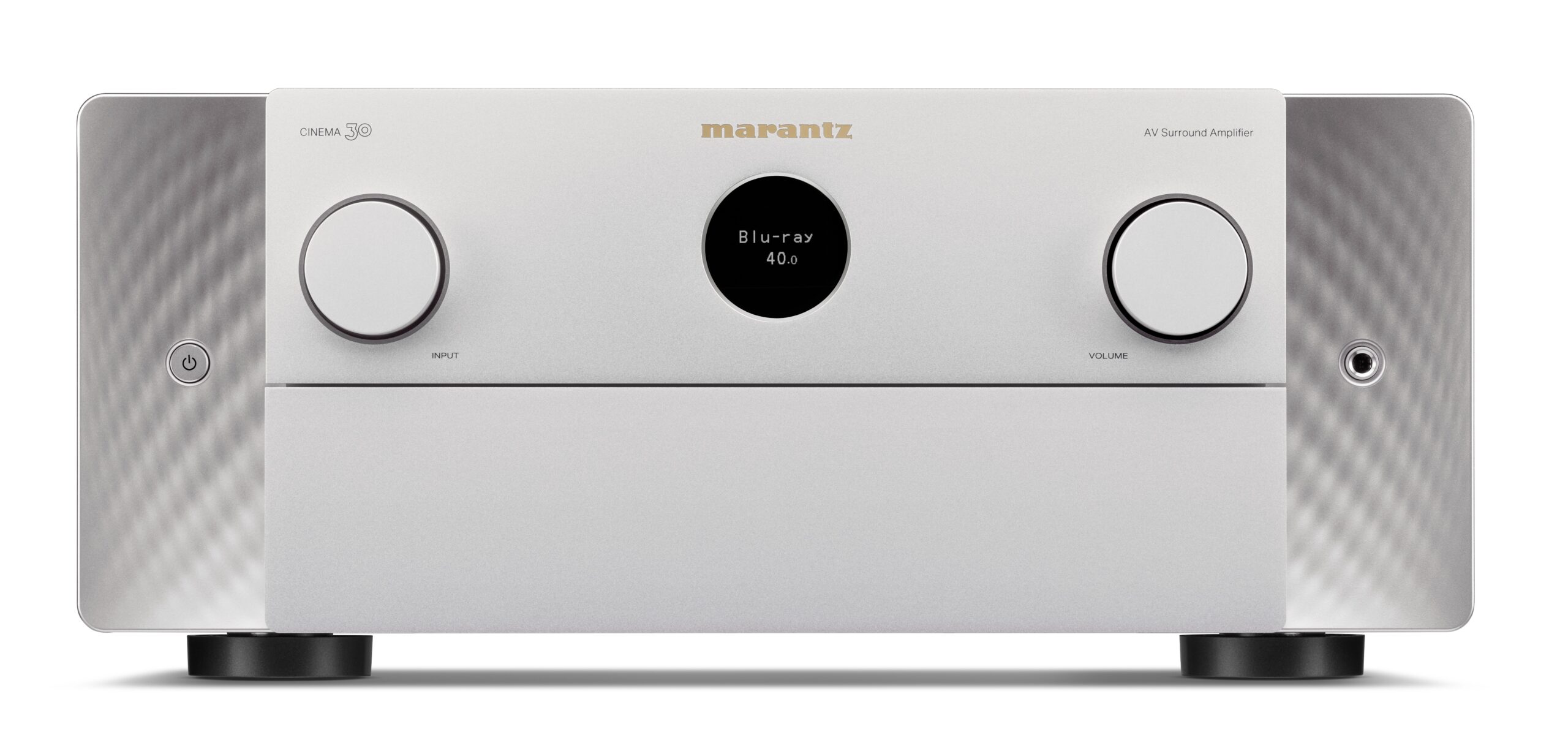
Stereo error?
As mentioned, the Marantz Cinema 30 has 11 amplifier channels, but like its amplifier sister from Denon, it has 13 speaker outputs. This provides some additional configuration options. Unfortunately, the ability to connect an extra pair of front speakers is not one of them. If you have an extra pair of front speakers for stereo listening, you should be able to convert the extra speaker output to Speaker B. You can’t. The only way to do this is to reduce the number of amplifier channels in the surround from 11 to 9.
I think this is a mistake as you shouldn’t drive Speaker B simultaneously with the rest. The additional speaker output should therefore be able to be configured in this way if desired.
Is there enough power?
You can never have enough power and I would have liked even more at this price. At home it’s more than loud and powerful enough, but in the quieter test room at work, an additional power amplifier in the front could be useful.
The Cinema 30 is barely more powerful than its little brother, the Cinema 40, which costs 40 per cent less. The only practical difference is that its little brother has two fewer amplifier channels: 9 instead of 11.
If we go for the Denon AVC-X4800H at well under half the price of the Cinema 30, you get much of the same amplifier enjoyment.
However, if we look up to the flagship amplifier set AV10 and AMP10, the price is over three times higher, and in that respect, the Cinema 30’s price is fair enough if you want top-class Marantz sound.
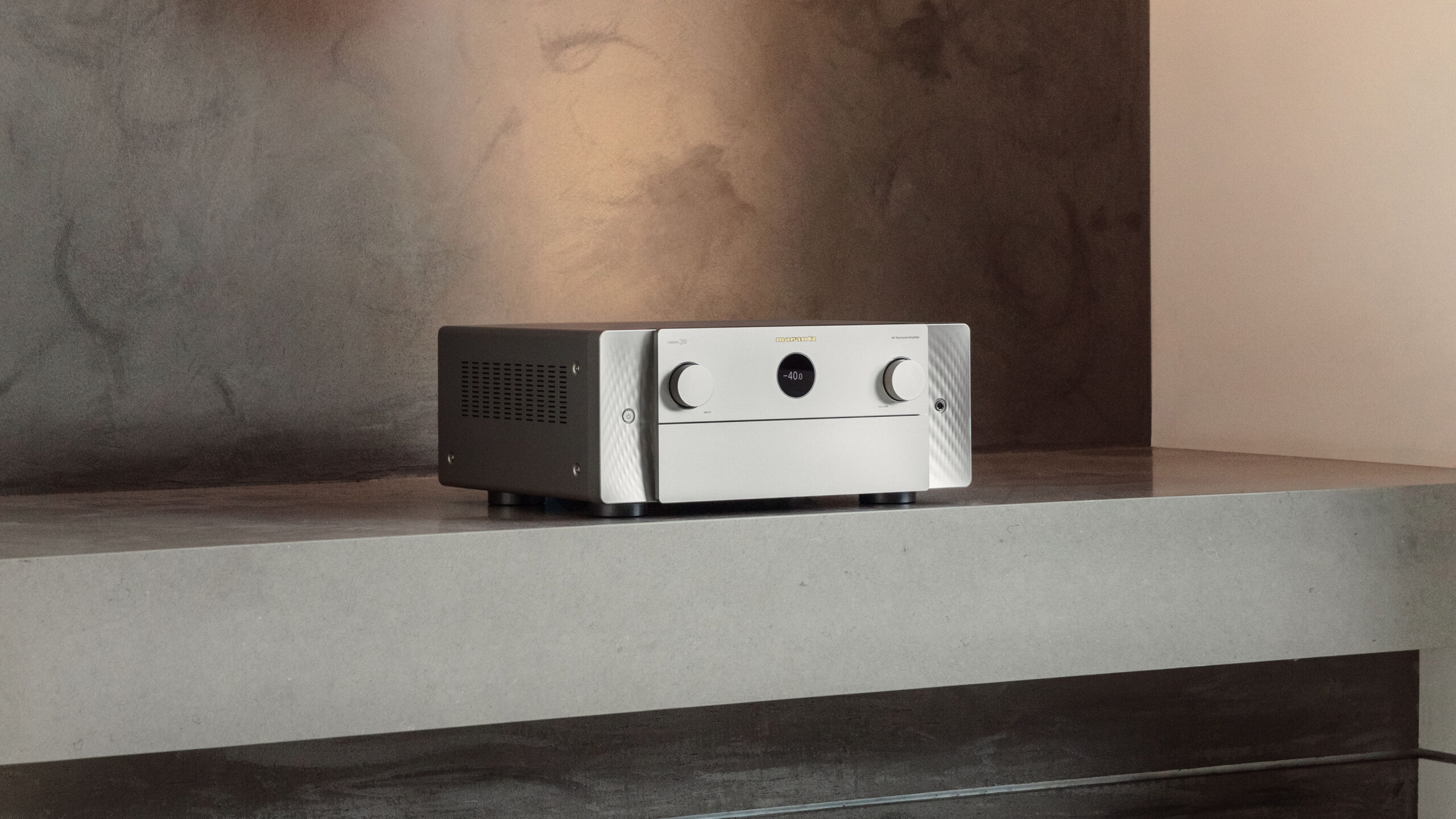
Marantz Cinema 30: Conclusion
The Marantz Cinema 30 is a high-end amplifier for the discerning home cinema enthusiast. It delivers a wonderful combination of powerful surround sound, high resolution and advanced audio processing. The support for up to four subwoofers is particularly impressive, and together with Dirac Bass Correction, it delivers amazing bass integration in the room. Don’t worry, it also works great with two or just one subwoofer.
Compared to its sister model, the Denon AVC-X6800H, they have very similar performance. The Marantz has some slight advantages on the music front and also has a more playful look. The price makes it best suited to those who appreciate a premium aesthetic product.
The Marantz Cinema 30 is far from being cheap, but it provides a top-notch surround experience for people who really want to invest in a serious home cinema.

We think
Accurate and resolved surround sound, Dirac Live makes a big difference, especially in the bass. Great ease of use. You'll always want even more power. No balanced inputs or outputs. Time for a Bluetooth remote control?
4500 €
Specifications
- Power: 11 x 140 W (8 Ohm, 2 channels, 20-20,000 Hz)
- Number of processor channels: 13.4
- HDMI: 6 in (3 x HDMI 2.1), 3 out (1 x eARC)
- Audio formats: Dolby TrueHD, Dolby Digital Plus, DTS-HD MA, DTS:X, Dolby Atmos, Auro-3D
- Room correction: Audyssey MultEQ XT, Dirac Live (optional)
- Wireless: Chromecast built-in, AirPlay 2, Spotify Connect
- Turntable input: Yes (MM)
- App control: Denon AVR Remote
- Voice control: Via third party: Apple Siri, Google Assistant and Amazon Alexa
- Other: IMAX Enhanced, HEOS multi-room compatible
- Dimensions: 44.2 x 38.4 x 18.9 cm
- Weight: 19.4kg
- Colours: Black, silver
- Web: marantz.com
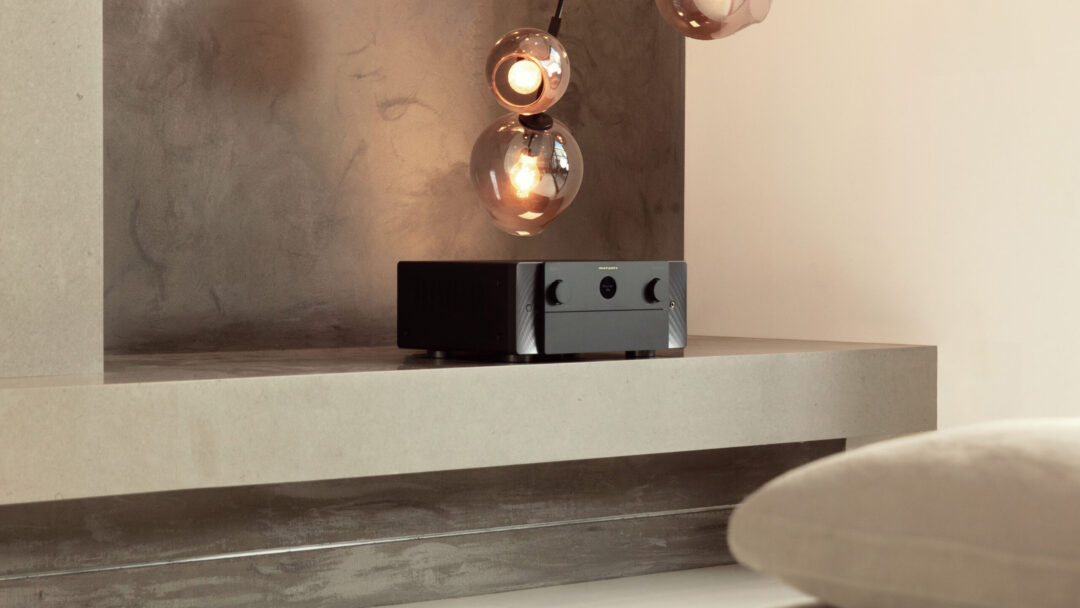


For me, 9 channels is enough. I live in apartment so the living room is not really big as in house so maybe don’t need much power? The main point is the cinema 40 sound quality equals to cinema 30? Thanks